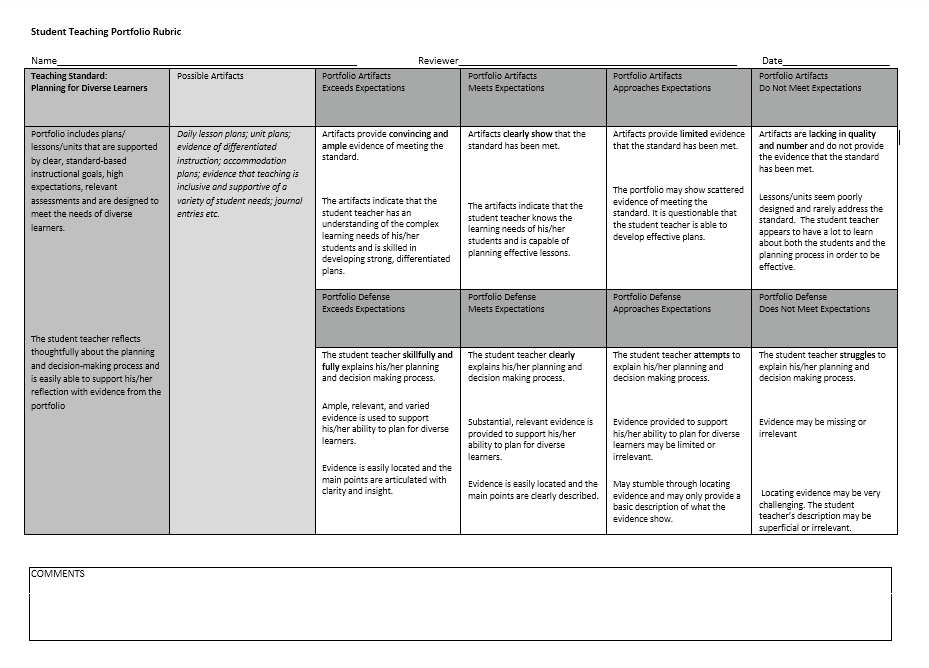Download these Free Grading Rubric Templates to help you create and print your own Grading Rubric easily and quickly.
In schools, colleges, and universities, it’s a common practice for teachers and professors to ask students to complete an essay or assignment and submit it for review.
Grading Rubric Templates For Teachers
Being a teacher, what you need to understand is that even if all the students are asked to write on the same topic, it is possible that each of them writes in a different manner and answers totally different questions, and discusses a unique perspective of the topic. This can create problems for the teacher to assess all the assignments and make sure to grade them equally even if they are written from different perspectives.
This becomes more complicated if students were asked to select their own topic and write on it. In this scenario, a grading system such as a grading rubric can help teachers and professors to evaluate all of the different assignments on universal standards and ensure to give precise and helpful feedback to receive better output in the next assignment.
Free Grading Rubric Templates
Here are previews and download buttons for these Free Grading Rubric Templates using MS Word.

Please click on the download button below to start downloading this Grading Rubric Template 01.

The download button for this Grading Rubric Template 02 is below.
Guidelines to create a Grading Rubric:
Define the Key Purpose:
Because there are a couple of types of rubrics that you can use and the choice mainly depends on what purpose or goals you want to achieve. This means the first thing is to define the core objective of creating the grading rubric and the particular uses of this system so you understand the requirements and needs to select the suitable type. For instance, how many details you want to include in your feedback and your precise you want to keep it, what expectations you have from the assignments, and how you want to evaluate the performance of each individual student are some questions that you should answer at the very first stage of creating a grading rubric.
Select a Particular Rubric:
Because a grading rubric is a versatile grading system and it can be used and implemented in a number of situations, there are many forms and types of this system being used around the world in numerous colleges and universities. It’s not necessary to go through all of these types but you can just select from the two most common and primary types of grading rubrics including; analytic rubric and holistic rubric.
The most common and simplest form of a rubric is the analytic rubric where you mention the criteria in a column while performance levels are mentioned in a row and each box within the grid includes a description of the performance level.
On the other hand, there is a holistic rubric which is a lot easier to make but it’s not effective for giving specific feedback to students. In this system, the designer creates performance levels i.e. from 0 to 5 or from 1 to 10 and then each level is given an expectation and overall description. This way the teacher and match the entire essay or assignment of students with each level and find the optimum level that matches the creative work.
Define the Criteria:
For the evaluation and assessment process, you need universal criteria by which you can analyze the work of each student. For instance, when you want to evaluate essays, you can choose criteria like; closeness to the original topic, originality of the work, authentication of research work, discussion on key points, relevancy of key characters with each other, and an effective conclusion. These criteria will help you determine the worth of each assignment on the same parameters for all of the students.
Create the Performance Level:
Once you have selected the criteria for the grading rubric, the next part is to define and include the performance levels. The most common performance levels that teachers and professors include are from 1 to 3 and 5 while some also take it up to 10 with specific descriptions of each level i.e. 1 being not satisfactory at all, and 5 being a completely exceptional piece of work. Keep in mind that mentioning a number or description or percentage are all acceptable types of performance levels and you should choose the type that suits your requirements.

MK Farooq, a Master’s degree holder in Computer Science, is driven by a passion to assist people in their daily tasks through the provision of high-quality documents and templates. With a strong foundation in technology and a keen understanding of documentation processes, MK Farooq has dedicated his career to simplifying the lives of individuals and businesses alike.
Leveraging his expertise, MK Farooq creates meticulously crafted templates and documents that cater to a wide range of needs, from project management to personal organization. His work is not just about providing tools but about empowering users to achieve efficiency and effectiveness in their endeavors.
